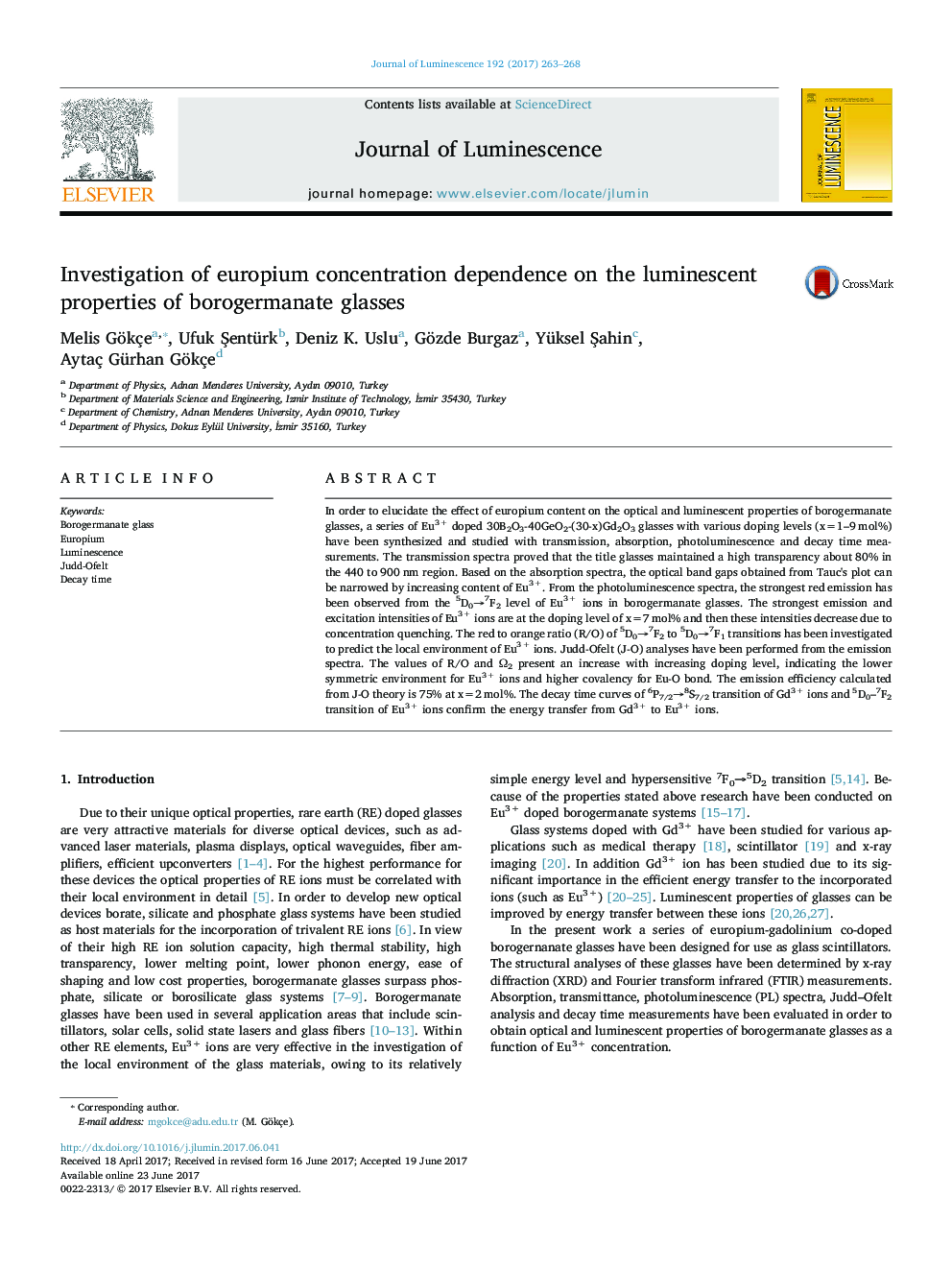| Article ID | Journal | Published Year | Pages | File Type |
|---|---|---|---|---|
| 5397397 | Journal of Luminescence | 2017 | 6 Pages |
Abstract
In order to elucidate the effect of europium content on the optical and luminescent properties of borogermanate glasses, a series of Eu3+ doped 30B2O3-40GeO2-(30-x)Gd2O3 glasses with various doping levels (x=1-9 mol%) have been synthesized and studied with transmission, absorption, photoluminescence and decay time measurements. The transmission spectra proved that the title glasses maintained a high transparency about 80% in the 440 to 900 nm region. Based on the absorption spectra, the optical band gaps obtained from Tauc's plot can be narrowed by increasing content of Eu3+. From the photoluminescence spectra, the strongest red emission has been observed from the 5D0â7F2 level of Eu3+ ions in borogermanate glasses. The strongest emission and excitation intensities of Eu3+ ions are at the doping level of x=7 mol% and then these intensities decrease due to concentration quenching. The red to orange ratio (R/O) of 5D0â7F2 to 5D0â7F1 transitions has been investigated to predict the local environment of Eu3+ ions. Judd-Ofelt (J-O) analyses have been performed from the emission spectra. The values of R/O and Ω2 present an increase with increasing doping level, indicating the lower symmetric environment for Eu3+ ions and higher covalency for Eu-O bond. The emission efficiency calculated from J-O theory is 75% at x=2 mol%. The decay time curves of 6P7/2â8S7/2 transition of Gd3+ ions and 5D0-7F2 transition of Eu3+ ions confirm the energy transfer from Gd3+ to Eu3+ ions.
Related Topics
Physical Sciences and Engineering
Chemistry
Physical and Theoretical Chemistry
Authors
Melis Gökçe, Ufuk Åentürk, Deniz K. Uslu, Gözde Burgaz, Yüksel Åahin, Aytaç Gürhan Gökçe,
